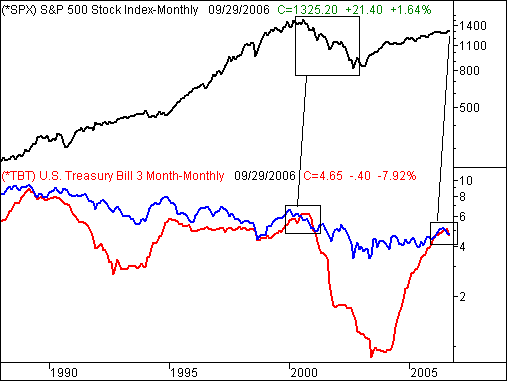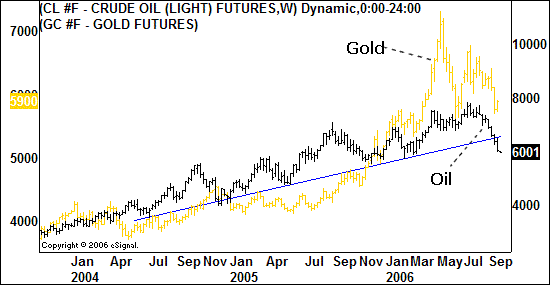So, the Fed stood pat once as expected they would. Let's get inside the meeting room for a moment. What may have they been considering during their meeting? I'm sure the recent drop in oil was a headline discussion, along with a severe drop in commodities. Quite certain there was talk of the housing sector and the sharp decline in that area. I imagine a mention of the latest economic data, including PPI, CPI, the jobs data and others. Perhaps a brief mention of bond yields and the spread across the curve.
Lots to consider for policy direction, right? What is the data pointing to? We may be ahead of the curve here, but it smells like deflationary signs are in the air. That's right. Deflation. But how could that be? To be certain, nobody is talking about it. But, we've noticed a pretty quick slowdown in the global economy, not just in the US. A dramatic slowdown in the economy takes the air out demand, and if supply levels rise, commodities and other inputs will drop sharply (as we've seen). This works to slow demand of goods and services worldwide. A rise in the dollar can be seen as strong demand for dollar-denominated assets -- no surprise as bonds have been bullish since May. Deflation means falling prices. Good for business, right? Absolutely not. Looking to the yield curve, spreads between the two-year and Fed Funds is extremely wide -- nearly .65 bps -- which may tell the tale for US growth (severe slowdown if not outright recession).
90-Day T-Bill Yield (Red) versus 10-Year Bond Yield (Blue)

An unprecedented spread such as this could almost demand a rate CUT (or more). The bond market is signalling rate cut, or risking severe recession. Recent economic data point to a strong possibility of a deflationary environment (core PPI has been negative for two consecutive months, CPI steady but may be trending lower). We'll definitely hear chatter about deflation if the September numbers again show a decline. Job growth is slowing to a more moderate range, and although wages seem to be contributing to an inflationary trend, we may be seeing a top in wage gains.
Commodity prices have dropped severely, with oil falling nearly 27% in six weeks (see chart). As for gold (see chart), a rise in bullion is a signal of higher inflation. The metal has dropped nearly 24% from its peak, and is testing long-term support, a deflationary trend?
Oil & Gold Futures

Demand has not cooled much, but expectations for oil consumption over the next year were revised downward. China's economy may be showing signs of overheating, hence the recent rate hikes from their central bankers. This action will slow demand even further for goods and services. Meanwhile, the housing sector has remained a sore point for our economy. With the recent bubble likely being popped, the market will respond slowly by bringing growth inline with trend. Finally the stock market has reached new yearly highs, in some cases right near alltime highs (Dow Industrials). Could market players be discounting a rate cut some months down the road?
The bottom line here? We've laid out some solid arguments that may support deflationary trends. The Fed is walking a tightrope here with monetary policy, careful not to tip the balance. The recent slack from slowing the economy now has risk of deflation built in, and not the cushion from a 'goldilocks' scenario that most desire (not too hot, not too cold). To combat any severe weakness in the economy or prices, the Fed will CUT rates. Bernanke mentioned in July that inflation expectations have subsided. Be careful what you wish for, as it may come true.
Price Headley is the founder and chief analyst of BigTrends.com.